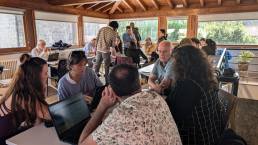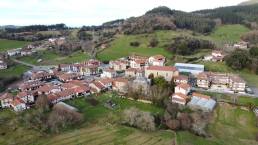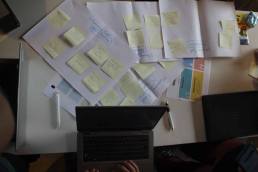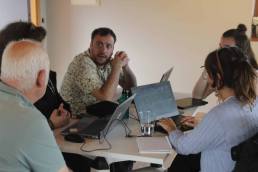Aiguasol, in collaboration with Tecnalia and Barrizar, supports and advises the Ekogella energy community, located in the municipality of Ispaster (Basque Country), on its technical and economic feasibility to ensure the project’s success and transform Ispaster into a greener and more self-sufficient municipality. This initiative is part of the European LOCAL RES project, aiming to promote local energy communities (LEC) and foster a sustainable energy transition in Europe.
For years, Ispaster has been at the forefront of climate action, implementing strategies to adapt to global warming and mitigate its effects. Highlights include the creation of a heat network powered by biomass boilers and solar thermal panels, the design of charging points for electric vehicles, and currently, the implementation of collective electricity self-consumption systems through Ekogella.
Aiguasol’s expertise in driving Energy Communities
At Aiguasol, we participate in the project by contributing our expertise to the development of this LEC. Among our contributions are:
- Community engagement support: The local community is actively involved in decision-making, ensuring that their needs and values are considered at every stage of the project.
- Defining the legal model: In collaboration with La Mirada SCCL, we chose the cooperative model to unite efforts among neighbors, seeking common benefits and optimizing available resources.
- Monitoring and energy efficiency: We analyze energy consumption and track data from photovoltaic systems (PV), thermal systems, electric vehicles, batteries, and the heat network to adjust usage and maximize renewable energy utilization.
- Defining the economic model: Through evaluating the community’s costs and revenues, we developed and adapted a customized economic model, optimizing distribution coefficients based on member consumption to ensure viability and sustainability.
The importance of the cooperative model: social cohesion
Under the recommendations and advice of the companies participating in the project, the residents of Ispaster have the opportunity to participate in the design and management of energy installations, as well as collaborate in the creation of collective electricity projects.
Through regular meetings, interested residents can share their opinions and reach consensus on key decisions to ensure the project’s success, such as defining the management model and internal organization, among other aspects. Moreover, transparent management fosters trust among members, ensuring resources are directed toward the common good.
This approach makes energy more accessible to everyone in the village, regardless of their economic situation, fostering a more inclusive and equitable model.
At Aiguasol, we promote and defend cooperatives as the most suitable legal model for the creation of energy communities, as they operate under the principles of Social and Solidarity Economy, such as active participation and energy democratization.
From an economic perspective, this model reduces costs through resource pooling, making energy more affordable and redistributing benefits equitably. Furthermore, it strengthens social cohesion, building community ties and promoting environmental awareness. All of this makes the cooperative model a key tool for a sustainable, just, and people-centered energy transition.
Challenges of the energy revolution
Energy communities in Spain also face several challenges. One of the main obstacles is administrative hurdles. Establishing an energy community requires meeting a series of legal and administrative requirements that can be complex and discouraging for interested citizens.
Although some administrative barriers have been overcome to advance self-consumption projects, there is still no full transposition of European regulations regarding Citizen Energy Communities and Renewable Energy Communities (EU 2019/944). On one hand, this provides an opportunity to define the energy community model from the bottom up, that is, from citizens to administration. On the other hand, it highlights shortcomings such as the lack of financing mechanisms and a suitable tax framework, among other legal-administrative barriers.
Energy communities are also affected by limited access to optimal spaces for installing renewable technologies. This, combined with barriers to accessing and connecting with the distribution grid, restricts communities’ capacity to efficiently generate, store, and distribute energy.
Additionally, the development of an energy community requires specific knowledge in fields like engineering, law, and economics, which are not always readily available to local communities. For this reason, it is essential to work with companies and organizations that provide specialized advice tailored to local needs to ensure the long-term success of the energy community.
Next steps for the LOCAL RES project
The project will focus on consolidating the business model based on public-private collaboration and validating it with the community through participatory processes. Efforts will be made to implement smart contracts that guarantee fair pricing and encourage energy savings among users, adapting them to the needs of the various stakeholders involved.
In addition, the project will continue optimizing the operation of the energy island, ensuring the effective integration of equipment and networks managed by the local energy service company (ESCO). The goal is to establish a solid foundation for a sustainable and replicable energy system.




